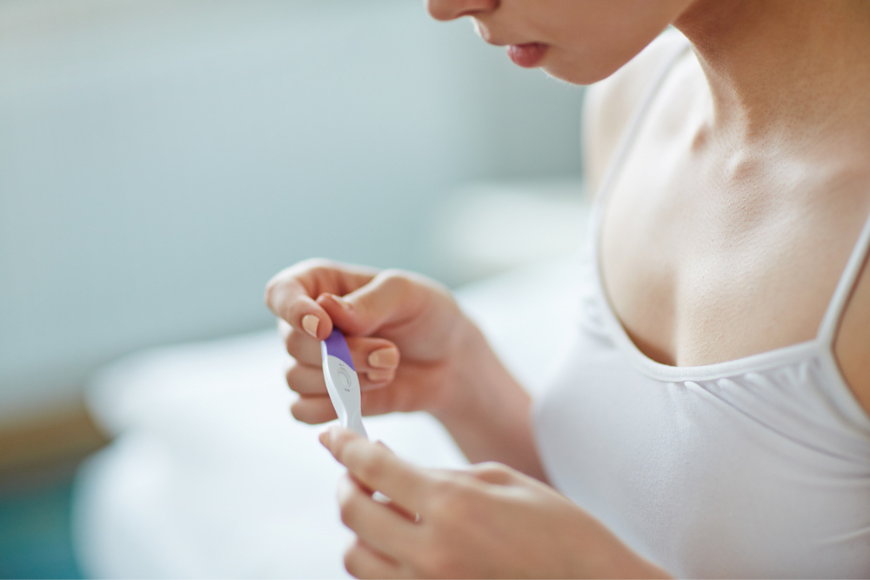Embarrassing Plumbing Leaks
Not a very politically correct title but rarely will you find a woman is her third or fourth decade of life onwards who does not identify with urgency where you are not able to put off going to the toilet or worse still urge incontinence i.e. urine leaks before you get to the toilet. Or with sudden extra pressure(stress) within the tummy while you laugh, cough, sneeze, exercise even simple dancing or running make us oh so conscious of the wetness. In some it may be further complicated by frequency that is passing urine very often, several times during the night as well as many times during the day. Some women also find that they leak urine during sex, especially during orgasm. Not a very comfortable scenario to be in & yet millions of women suffer in silence with this malady.

Strangely enough, it is estimated that about three million women in the UK alone are regularly incontinent let alone the millions in the subcontinent. Overall this is about 4 in 100 adults, and well over half of these are due to stress incontinence. As many as 1 in 5 women over the age of 40 have some degree of stress incontinence. It is likely that the true number of people affected is much higher. Many do not tell their doctor about their incontinence, due to embarrassment. Some wrongly think that incontinence is a normal part of ageing or that it cannot be treated. This is unfortunate, as many cases can be successfully treated or significantly improved.
Why does this happen is really a simple explanation of weakened pelvic floor muscles often stretched by childbirth. These are a group of muscles that wrap around the underside of the bladder and back passage (rectum). Stress incontinence is common in women who have had children, particularly if they have had several vaginal deliveries. It is also more common with increasing age, as the muscles become weaker, particularly after the menopause and in women who are obese. Stress incontinence can also occur in men who have had some treatments for prostate cancer. This includes surgical removal of the prostate, and radiotherapy but usually it’s the women who suffer. Urgency and urge incontinence are due to unstable or overactive bladder muscles. Mostly, it’s a combination of both weaknesses, of the pelvic floor muscles and of the bladder wall that allow the urine to leak.
So what must a woman do? Well the simplest intervention is to strengthen the pelvic floor muscles with pelvic floor exercises that most doctors sadly forget to convey to women in their ‘busy practice’.
Easily 60-70% of stress incontinence can be cured or much improved with this treatment. If you are overweight and incontinent then you should first try to lose weight in conjunction with any other treatments. Surgery may be offered if the problem continues and or the damage is significant. Medication may be used in addition to exercises if you do not want, or are not suitable for, surgery.
For pelvic floor exercises, it is important that one exercise the correct muscles and that’s certainly easy to learn without the help of any specialist. Sit, stand or lie with your knees slightly apart. Imagine one is trying to stop wind escaping from the back passage (anus). One will have to squeeze the muscle just above the entrance to the anus till one feels some movement in the muscle. Don’t move the buttocks or legs. Now imagine one is passing urine and is trying to stop the stream. Hold to the count of five, then relax. Repeat at least five times. These are called slow pull-ups. Then do the same exercise quickly for a second or two. Repeat at least five times. These are called fast pull-ups. You will find that one is using slightly different parts of the pelvic floor muscles to the first exercise (ones nearer the front). These are the ones to strengthen. If one is not sure that the correct muscles are being exercised, then put a couple of fingers into the vagina to be able to feel a gentle squeeze when doing the exercises. Important is to do these exercises every day. Aim to do the above exercises for about five minutes at least three times a day and preferably 6-10 times a day. Ideally, do each five-minute bout of exercise in a different position each time. That is, sometimes when sitting, sometimes when standing and sometimes when lying down. Remember to not squeeze other muscles at the same time as you squeeze your pelvic floor muscles.
I remember the physio who taught me these during the antenatal classes in London at the Royal Free Hospital who said that the best way to remind yourself is to link these Kegel’s exercises to say going in a lift, answering the phone or at a traffic light or when packing your kids tiffin. Any activity that you do regularly so that you don’t forget in your busy life as a woman running helter-skelter to please the family, bosses etc. etc. and sacrificing your own wellbeing. As the muscles become stronger, increase the length of time that you hold each slow pull-up. You are doing well if you can hold each slow pull-up for a count of 10 (about 10 seconds).Given time, effort and practice all women become good at these exercises but the benefit in stress incontinence will show only after 8-20 weeks and of course the added benefit is a better sex-life.
SEE ALSO...
Some women need much stronger modalities of treatment which are in addition to the pelvic floor exercises. They may require electrical stimulation to stimulate the pelvic floor muscles, to make them contract and become stronger. Biofeedback may also be used which is a technique to help you to make sure that you are exercising the correct muscles. For this, a physiotherapist inserts a small device into the vagina when doing pelvic floor exercises. When the right muscles are squeezed, the device gives a signal. What I have found very useful are Vaginal cones. These are small plastic cones that one puts inside the vagina for about 15 minutes, twice a day. The cones come in a set of different weights. At first, the lightest cone is used. One needs to use your pelvic floor muscles to hold the cone in place. So, it is a way to help one exercise the pelvic floor muscles. Once a lady can hold on to the lightest one comfortably, she may move up to the next weight and so on.
As a last resort, in some severe cases Surgery can be advised. The operations aim to tighten or support the muscles and structures below the bladder. The tension-free vaginal tape (TVT) procedure is commonly used that involves a sling of tape being used to support the urethra and bladder neck. Sometimes a sling is made using tissue from another part of the patient’s own body, such as the abdominal muscles. Colpo-suspension is the name of another operation to support the urethra and treat stress incontinence.
Some women may also have a vaginal prolapse due to the weakness of the support structures of the pelvis and one or more of the organs of the body drops down into the vagina. Commonly, the prolapse involves the bladder. This is known as a cystocoele. The best way to find this out is by double micturition , which in simple terms means passing urine twice. Once you have finished passing urine, start again and if there is a bladder prolapse, you will be surprised to see urine coming out again. Make sure you empty completely otherwise the residual urine can be a site of frequent bladder infections. Surgical repair of this weakness (called an anterior repair) is often performed to treat the associated urinary incontinence. Other procedures involve injections of bulking agents around the bladder entrance, to keep it closed. These injections may be either natural materials (such as fat) or synthetic ones (such as silicone).
Medication like Duloxetine that is usually used to treat depression was found to help with stress incontinence separate to its effect on depression. However, It is thought to work by interfering with certain chemicals that are used in transmitting nerve impulses to muscles. This helps the muscles around the urine outlet (urethra) to contract more strongly. This may be advised if pelvic floor exercises alone are not helping to treat the stress incontinence. It is usually advised in women who do not want to undergo surgery, or in women who have health problems that may mean that surgery is unsuitable.
Of course, general lifestyle measures which may help are having easy access to a toilet, having a commode in the bedroom makes life much easier, empty your bladder frequently while you are strengthening the pelvic floor, lose weight since stress incontinence is more common in women who are obese. It has been shown that losing a modest amount of weight even just 5-10% weight loss can improve urinary incontinence in overweight and obese women. Stop or lessen Smoking which can cause cough which can aggravate symptoms of incontinence.
For urge incontinence the now infamous drug Botox injected into the bladder muscle causes the bladder to relax, increasing its storage capacity and reducing episodes of leakage. It can be used in adults that do not respond to or cannot use other medications that treat overactive bladder. Another drug treatment that may be helpful for some women is hormone therapy, which uses estrogen alone or in combination with progesterone. However, evidence of benefit for urge incontinence has been mixed. Plus there are potential increased risk of blood clots and breast cancer in hormone therapy so certainly not advised easily to suffering women.
So , please do not suffer in silence and work the ‘ass off’(read: do pelvic floor exercises ) to plumb that leak.





.png?itok=HBSyMDok)









































































.png)
































.png?itok=0fOAXkOm)

























.png?itok=EH_x0Pha)
